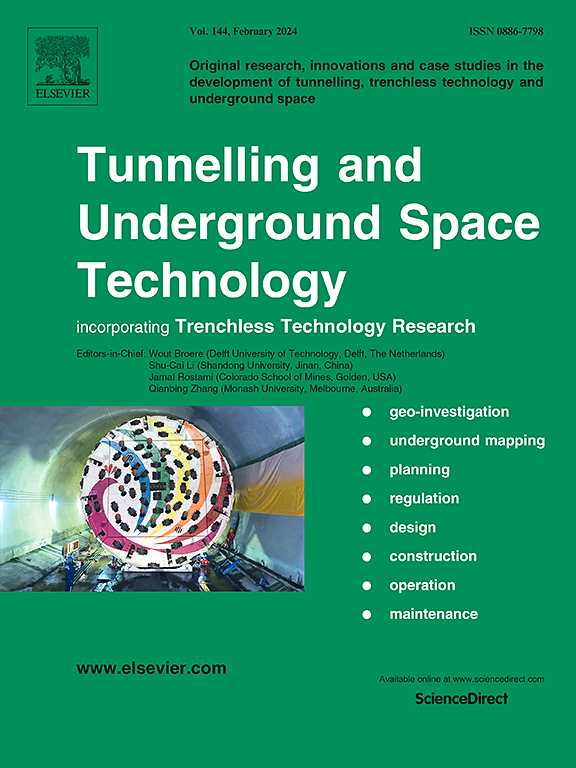Bidirectional denoising method based on Fast Fourier transform analysis for TBM field penetration data
IF 6.7
1区 工程技术
Q1 CONSTRUCTION & BUILDING TECHNOLOGY
引用次数: 0
Abstract
The dynamic interaction of rock and tunnel boring machine (TBM) in the penetration process makes a large amount of high-frequency noise in field penetration data. This noise prevents related analysis in rock-cutting processes, TBM performance prediction, and geological condition recognition. Although some endeavors provide empirical denoising threshold values, formulas, and optimization methods, fewer studies offer a solid physical foundation for selecting denoising parameters and reducing time-delay distortion for denoised signals. This study proposed a Fast Fourier Transform-based bidirectional filtering method for noise reduction of TBM operating data. Firstly, a denoising parameter selection algorithm for low-pass filters is established by analyzing the power spectrum density distribution of operating parameters in the frequency domain. Then, a standardized digital filter design and bidirectional filtering flowchart are developed. Finally, field data from penetration and free rotating tests from two water diversion tunnels are employed to verify the proposed denoising method, followed by the engineering applications. Results reveal that (1) The frequency domain amplitude of operating data shows a rapid decrease trend while larger values are distributed in frequency less than 0.1. (2) The torque intrinsic frequency obtained from the field free rotating test of the cutterhead facilitates determining the cutoff frequency of a low-pass filter. (3) The proposed bidirectional filtering method achieves an excellent denoising effect in eliminating time delay behavior. (4) Engineering application of the proposed method improves the fitting quality of the boreability index to a great degree. This study is significant for enhancing filter design efficiency and reducing data processing costs for TBM large-scale field data obtained in medium to strong rock with a sampling rate of less than 1 Hz/s.
求助全文
约1分钟内获得全文
求助全文
来源期刊

Tunnelling and Underground Space Technology
工程技术-工程:土木
CiteScore
11.90
自引率
18.80%
发文量
454
审稿时长
10.8 months
期刊介绍:
Tunnelling and Underground Space Technology is an international journal which publishes authoritative articles encompassing the development of innovative uses of underground space and the results of high quality research into improved, more cost-effective techniques for the planning, geo-investigation, design, construction, operation and maintenance of underground and earth-sheltered structures. The journal provides an effective vehicle for the improved worldwide exchange of information on developments in underground technology - and the experience gained from its use - and is strongly committed to publishing papers on the interdisciplinary aspects of creating, planning, and regulating underground space.
 求助内容:
求助内容: 应助结果提醒方式:
应助结果提醒方式:


